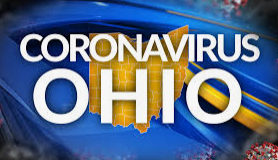 The Ohio Office of Budget and Management recently issued guidance for local governments receiving Coronavirus Relief Funding through the OBM. The guidance applies to funds awarded as a result of legislation from the Ohio General Assembly and the Ohio Controlling Board allocating federal funding from the CARES Act from the Coronavirus Relief Fund (CRF). The CRF was established to make payments for specified uses to state and local governments. The OBM guidance is intended to supplement guidance issued by the U.S. Treasury Department. Jurisdictions should carefully review all state and federal guidance but keep in mind that these guidelines are subject to change.
The Ohio Office of Budget and Management recently issued guidance for local governments receiving Coronavirus Relief Funding through the OBM. The guidance applies to funds awarded as a result of legislation from the Ohio General Assembly and the Ohio Controlling Board allocating federal funding from the CARES Act from the Coronavirus Relief Fund (CRF). The CRF was established to make payments for specified uses to state and local governments. The OBM guidance is intended to supplement guidance issued by the U.S. Treasury Department. Jurisdictions should carefully review all state and federal guidance but keep in mind that these guidelines are subject to change.
Generally speaking, the CARES Act requires that CRF funds only be used to cover expenses that: 1) are necessary expenditures incurred due to COVID-19; 2) were not accounted for in the government entity’s most recently approved budget as of March 27, 2020; and 3) were incurred during the period that begins March 1, 2020 and ends on December 30, 2020. Permissible expenditures of CRF funds are either (1) a cost [that] cannot lawfully be funded using a line item, allotment, or allocation within that budget (recently approved as of March 27, 2020); OR (2) the cost is for a substantially different use from any expected use of funds in such a line item, allotment, or allocation. The funds must also be used only in response to the current COVID-19 public health emergency and cannot be used to prepare for a future health emergency. CRF funds do not need to be funds of last resort.
The guidance provides a list of permissible uses of CRF funds which is not intended to be comprehensive. Permissible expenses include COVID-19 related expenses for public hospitals, expenses related to establishing temporary public medical facilities and other measures to increase COVID-19 treatment capacity, costs of providing COVID-19 testing, expenses for disinfection of public areas and other facilities, expenses for public safety measures undertaken in response to COVID-19, and expenses of providing paid sick and paid family and medical leave to public employees who are infected/directly impacted to enable compliance with COVID-19 public health precautions. It is currently unclear if this includes using funds to pay for leave taken by employees under the Family First Coronavirus Response Act.
Also included in the list of permissible expenditures are “payroll expenses for public safety, public health, health care, human services, and similar employees whose services are substantially dedicated to mitigating or responding to” COVID-19. The guidance notes that while the U.S. Treasury has not provided a definition for “substantially dedicated,” the State of Ohio is using a benchmark of 50% or more of employee time dedicated to COVID-19 response as meeting the threshold. Still, public entities are encouraged by the guidance to set a threshold which meets the needs of their individual jurisdiction. Careful documentation should be kept by each public entity regarding any determination made regarding this threshold.
Perhaps most critical for public entities in Ohio, the guidance states that “Public safety and public health personnel are ‘presumed’ for administrative convenience to be substantially dedicated unless the chief executive determines that specific circumstances indicate otherwise.” This means that the entire amount of payroll and benefits for police officers, sheriffs’ deputies, firefighters, public health personnel who directly engaged in matters related to public health and related supervisory personnel could be eligible CRF expenditures. This is an area that is subject to different interpretations and jurisdictions should consult with their legal counsel and auditors prior to using the CRF funds for this purpose.
New in the October 1, 2020 OBM guidelines, local governments are required to provide interim reporting by October 20, 2020 for all activity through September 30, 2020. A second interim report is due January 6, 2021 for all activity through October 1, 2020. Finally, all final close-out reports are due February 10, 2021 for all liquidation and reconciliation activities between January 1 and January 31, 2021. Thus, the period between December 30, 2020 and February 1, 2021 can only be used as a liquidation or account reconciliation period, meaning that expenditures can only be made for performance of services and delivery of goods that occurred prior to December 30, 2020. Importantly, all cash on hand reported on the final February 10, 2021 report must be returned to OBM no later than February 1, 2021. This means entities need to be proactive about closing out accounts in order to return unused funds prior to the reporting date.
The full guidance document can be found here: Coronavirus Relief Fund Guidance Updated 2020-10-01 Specific questions regarding eligibility of a specific cost can be directed to the Ohio Grants Partnership via e-mail at grants@obm.ohio.gov. As stated above, jurisdictions should work closely with legal counsel and remain alert for further updates from the State of Ohio and U.S. Treasury Department.
The attorneys at Fishel Downey Albrecht & Riepenhoff, LLP regularly assist employers with federal and state law passed in response to the COVID-19 pandemic. If you have any questions about this or any other matter, please contact us at info@fisheldowney.com or call 614-221-1216.
